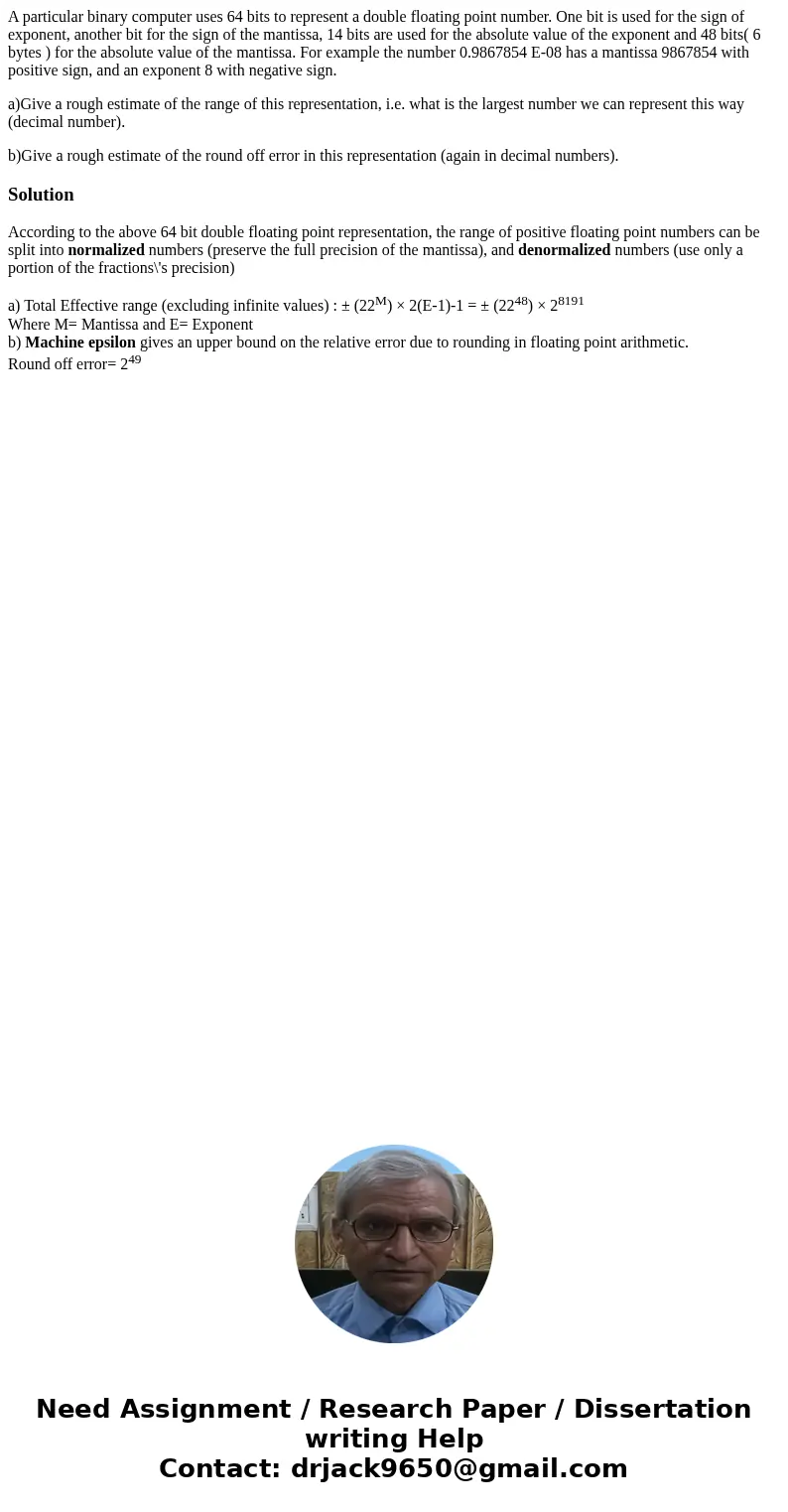A particular binary computer uses 64 bits to represent a dou
A particular binary computer uses 64 bits to represent a double floating point number. One bit is used for the sign of exponent, another bit for the sign of the mantissa, 14 bits are used for the absolute value of the exponent and 48 bits( 6 bytes ) for the absolute value of the mantissa. For example the number 0.9867854 E-08 has a mantissa 9867854 with positive sign, and an exponent 8 with negative sign.
a)Give a rough estimate of the range of this representation, i.e. what is the largest number we can represent this way (decimal number).
b)Give a rough estimate of the round off error in this representation (again in decimal numbers).
Solution
According to the above 64 bit double floating point representation, the range of positive floating point numbers can be split into normalized numbers (preserve the full precision of the mantissa), and denormalized numbers (use only a portion of the fractions\'s precision)
a) Total Effective range (excluding infinite values) : ± (22M) × 2(E-1)-1 = ± (2248) × 28191
Where M= Mantissa and E= Exponent
b) Machine epsilon gives an upper bound on the relative error due to rounding in floating point arithmetic.
Round off error= 249

 Homework Sourse
Homework Sourse